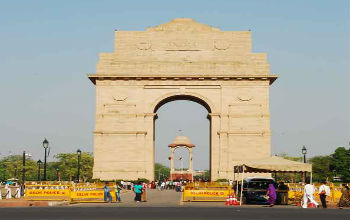 Category : History & Culture
Category : History & CultureIndia Gate is a stone monument dedicated to the memory of the Indian soldiers who fought and died in the First World War It ranks as one of the primary places of interest in Delhi. The Indian soldiers were part of the British army and represented the military might of the British Empire at the height of its powers. India Gate was designed by Edward Lutyens and took 10 years to complete. The structure of India Gate is a triumphal arch, which is 42 meters high. Think about Delhi and you are bound to think about New Delhi India Gate. Initially called the All India War Memorial, this historical monument in New Delhi bears the memoir of 90000 Indian soldiers who were killed in First World War. Designed by Sir Edwin Lutyens, the construction work of India Gate was completed in the year 1931. Amar Jawan Jyoti is a burning shrine underneath the arch of the famous India Gate. The flame honors the immortal warriors of India. The shrine is a monument made out of black marble. A rifle is positioned on the barrel, tufted by a helmet of a soldier. The words "Amar Jawan is inscribed in gold in each of the faces of the monument. The Prime Minister and the President of India and all other visiting guests pay respect to the immortal soldiers, at this site on various State ceremonies, 26 January, Republic Day etc.
One of the most popular tourist destinations in the capital the India Gate today acts as a popular picnic spot for most of the tourists and citizens of Delhi. Also known as the 'All India War Memorial', the India Gate India Gate in Delhi was constructed as a memorial in honor of 90,000 soldiers who sacrificed their lives during World War I and also the Third Anglo Afghan War. 'Amar Jawan Jyoti' or the flame of the immortal warrior is burning under it since 1971. The eternal flame reminds one of the sacrifices of those brave soldiers who lost their precious lives in an attempt to protect the country. India Gate in Delhi at present is a famous relaxation for the local people of Delhi in summer evenings and a popular picnic spot in winter months. The popular India Gate is located at the heart of the capital, and easily accessible by the tourists. Delhi India Gate lies at the east end of Janpath that leads to the Rashtrapati Bhawan. India Gate offers a variety of entertainment. The whole day can be spent by watching monkey performance, riding a camel, viewing the soap bubbles that is blown all over the lawns of the India Gate, playing with balloons and more. In the evening, Delhi's India Gate is crowded with evening walkers as well as tourists and mobile vendors. You can taste the typical Indian fast foods, 'fruit chaat', 'bhelpuri', 'chana jor garam', 'dal ka pakodas', aerated drinks from the arcade of vendors stationed there. |
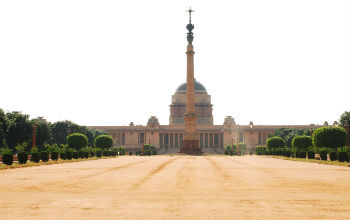 Category : History & Culture
Category : History & CultureThe Rashtrapati Bhawan is a renowned monument in Delhi. It is said to be the palace of the then Viceroy of India. At present, the Rashtrapati Bhawan is house of the President of India. The building was designed by Edwin Lutyens. The construction began in 1911 and it took 19 years to finish its construction. There is a wonderful Mughal garden towards the west of Rashtrapati Bhawan. It opens up to public every spring. Tours to Rashtrapati Bhawan and Mughal Gardens are available with a nominal registration fee of Rs.25. Visitors in a group of 30 and more shall be offered discounted rates and children below 12 years will not be charged any fee.
Edwin Lutyens designed the building and construction work began in 1911. It was supposed to be completed in 4 years but war intervened and it took 19 years to complete it. Lord Edwin, the then Viceroy and Governor General of India was the first to live here in 1931. India Gate is visible from the entrance of Rashtrapati Bhawan through the heat mirages. It looks close but it is at least 3km away from there. This little elevation of the Raisina Hill gives you a new perspective. The alignment of the buildings can't be more perfect. Even the black road with a yellow line in the middle surrounded by red earth on either side of the road now looks more meaningful than ever. There is a Durbar Hall inside the Rashtrapati Bhawan in Delhi and the dome of the hall measures 22.8 meters in diameter. The hall is marked by the beautiful colored marbles. You can see the Viceroy's throne in this hall. Today, the Durbar Hall is the major venue of all official ceremonies of the Indian Government such as the oath taking ceremony by the Prime Minister, the Cabinet and the Members of Parliament. The Arjuna Awards for Excellence is also presented in this hall of the Rashtrapati Bhawan.
Tours are available to the Rashtrapati Bhawan and Mughal Gardens with a registration fee of Rs.25. The fee is charged to maintain and improve services for the public in the Rashtrapati Bhawan. The registration charges will not be charged when the Mughal Gardens are open to public in months of February/March every year. The charges are for those who book themselves online for tours of Rashtrapati Bhawan and Mughal Gardens. It also applies to walk-in visitors on Friday, Saturday and Sunday when the Bhawan is open to public. Groups of 30 or more can get discounted rates and children below the age of 12 will be excused from registration charges. |
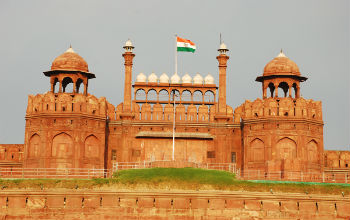 Category : History & Culture
Category : History & CultureThis red sandstone fort extends 2 km wide and differs in height from 18 meter on the river side to 33 meter on the city side. The fort was constructed by Shah Jahan in 1638 and was completed in 1648. Inside there are buildings, including the Hall of Public Audiences, the Drum House, the white marble all of Private Audiences, the Pearl Mosque, Palace of Color and the Royal Baths.Decorated with Persian, European and Indian art forms the fort is one of the brilliant pieces of architecture. Red fort - DelhiThe Red Fort or the Lal Quila as it is traditionally called is situated in old Delhi, the capital of India. The Red Fort was built by the Mughal Emperor Shah Jahan in the 17th century that took around 9 years to complete this magnificent structure and around 10 million rupees to build the fort. The Red Fort is a masterpiece of architecture and is one of the most visited spot in old Delhi. Tourists from India and abroad never miss the opportunity to visit this huge structure.Red fort is an enjoyable excursion and you will love to see the various attractions that the fort has. The royal baths or Hammams as it was rightly called was the place where the royals took bath in all their pleasure. Some important places include the Hammam and the Moti Masjid which are located side by side. Hammam or the public bath house is an important culture of the Mughals. The history of hammam can be traced back in the 16th century, at Purana Qila. On the North, the large spacious park stands guard. It is also called the life bestowing garden. A red sand stone pavilion known as Zafar Mahal stood in the centre. It is also a large water tank to store rain water to water the garden. |
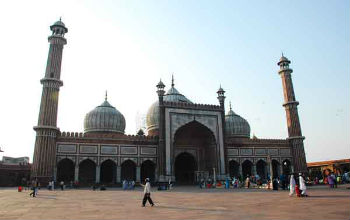 Category : Religious
Category : ReligiousJama Masjid located in Old Delhi is one of the principal mosques of Delhi. One of the last architectural extravagances of Emperor Shahjahan this is one of the largest mosques in India and its courtyard can hold around 25000 people. Construction of this mosque began in 1644 and was completed in 1658 by 5000 artisans. The Jama Masjid has three great gateways and four angle towers and two minarets standing 40m high and is constructed of alternating strips of red sandstone and white marble. Jama Masjid is the largest mosque in India. The Jama or Jami Masjid was constructed between 1644 and 1658 during the rule of Shah Jahan. Initially Jama Masjid was known as the Masjid-i-Jahanuma, meaning World Reflecting Mosque in Persian. With the Red fort on the east, the Jama Masjid can be viewed as a shining bright structure from a distance. One has to go to the imposing gateways of this beautifully glorified mosque along the wide stairs. The main eastern gate was strictly meant for the entry of the members of the Royal family. This entrance is generally closed on most of the days of the week. The principal prayer hall is situated on the western side. It is decorated with many elevated arches with cusps. The hall is utilized by the devotees on almost all the days except on Fridays and other Muslim holidays. On these special days of celebrations the courtyard remains packed up with the devotees offering their prayers. There is no entrance fee here but it is one of the most expensive places for photography. The authorities charge you 200 Rs for Photography inside the Masjid. I thought they were kidding but when they showed me the ticket I knew it was real. One can leave the footwear outside for a sum of "give whatever you want" but the tricky part is when you give them some coins they want a Rs.100 note. It helps to be cautious. How to get there: The nearest metro station is Chandni Chowk station. From here it is a 25 Rs paddle Rickshaw ride. Or you can just walk. A cupboard is there which lies close to the north gate of the Jama Masjid. It has a collection of relics that date back to several centuries. Among the relics the most popular is the Holy Korans written on deerskin. Address Meena Bazar, Daryaganj, Chandni Chowk New Delhi, Delhi 110006 Tel No - 011 23320005 Open Mon-Sat 9am-6pm |
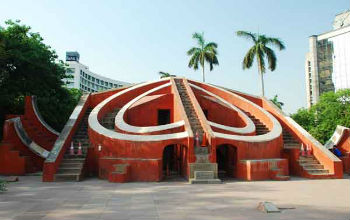 Category : History & Culture
Category : History & CultureLocated on Sansad Marg in Connaught Place, this structure is one of Maharaja Jai Singh 2's observatories. This ruler from Jaipur constructed this observatory in 1725 and is dominated by a huge sundial known as the Prince of Dials. Other instruments in this observatory follow the course of heavenly bodies and predict eclipses. It was built in 1724 by Raja Jai Singh II of Jaipur in Delhi. Jantar Mantar of Delhi, is an astronomical observatory with masonry instruments. Jantar Mantar has instruments that can graph the path of the astronomical universe. Jantar Mantar was built in 1724 by Raja Jai Singh II of Jaipur in Delhi. Jantar Mantar of Delhi, is an astronomical observatory with masonry instruments. Jantar Mantar in Delhi is a remarkable and curious creation of Raja Jai Singh II, the mathematician and astronomer king. Jantar Mantar has instruments that can graph the path of the astronomical universe.
The Delhi Jantar Mantar is open to public from 10 am to 6 pm. The entry to this amazing astronomical observatory is free. As it is located at the city center adjacent to the well know Connaught Place, you can easily reach Delhi Jantar Mantar without much hassle. If you visit the capital city of New Delhi, do not forget to have a glimpse of Jantar Mantar-a beautiful creation of the Jaipur King. |
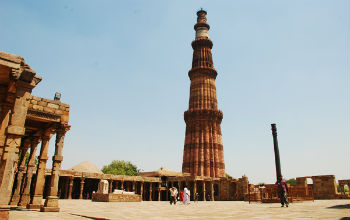 Category : History & Culture
Category : History & CultureThe Qutub Minar located in Delhi is the world's tallest brick minaret, standing at a height of 72.5 meters. Commissioned by Delhi's first Muslim ruler, Qutb-ud-din Aibak in 1193, Qutub Minar then had only a basement. Three more towers were added to the structure by his successor and son-in-law Shamsu'd-din Iltutmish. The Qutub Minar is known to be the earliest and most evident example of Indo-Islamic architecture and is surrounded by several other ancient structures collectively known as the Qutub Complex. One of the most important tourist centers in India Delhi is home to some of the finest monuments in the world. Mostly built during the Mughal reign in India the monuments in Delhi represent a rich and rich style of architecture. The Qutub Minar in Delhi is apparently the largest tower in the world built by one of the Mughals. Today, Qutub Minar is an eminent member of the World Heritage Site community and has managed to stand firm despite the ravages of time. Qutub Minar of Delhi is surrounded by a lush green manicured garden, which is a much favored leisure spot for Delhi locals. You can see tourists and locals loitering around the whole winter afternoons here and there inside the tower. Qutub Minar at Delhi is a 5 storied tower. Each tower of the famous Qutub Minar has unique designs. It was hit by lightening twice. Due to this hazard, there was major damage in the structure. But during the reign of Muhammad-bin-Tughlaq, the king repaired the ensuing damage. Again during the reign of Emperor Feroze Shah Tughlaq, when the top most storey of the Qutub Minar was destroyed, the king repaired the floor and elevated the Qutub Minar to another level. Inspired by the Minaret of Jam in Afghanistan the Qutub Minar is an interesting mix of architectural styles. The base of the Qutub Minar at Delhi measures 14.32 meters and the top of the structure measures 2.75 meters. The first 3 stories of the Qutub Minar has different designs. While the base has alternate angular and circular flutings, the second one is round. The third storey of the Qutub Minar has only angular flutings. The balconies projecting out of the Delhi Qutub Minar heightens the beauty of the Minar. The iron pillar is the main attraction in the spacious Quwwat-Ul-Islam Masjid courtyard. It weights over 6511kg. It dates back to 4th century, at times when the World's knowledge about making iron from ore was still a complicated idea. It is amazing to notice the smoothness of the pillar which indicated the purity of iron. Events like Photography, painting and musical exhibitions takes place from time to time in association with the Archaeological Survey of India. The Qutub festival which takes place in the month of November or December is a three days long cultural and musical event where artist and singers come together to perform. Qutub Minar is one of the oldest monuments in Delhi still in very good shape. It dates back to the time before the Lodis and the great Mughals. |
Category : Religious
India being the land of temples, finds its true reflection in Delhi. Akshardham is one of the most important religious sites in Delhi, which has claimed to fame for its piety and spirituality. One of the most important Delhi Monuments, it is also known for its architectural magnificence with its 234 pillars, 9 domes and 20 quadrangled shikhars-all displaying fine artistry and craftsmanship. Built on the lines of Sthaapatya shastra of India, the Akshardham in Delhi is the ideal example of a designers creativity and an engineers ingenuity.
Built by carving 6000 tons of pink sand stone brought from Rajasthan, the craftsmanship lies in the temple's design, which has nothing to do with metals like steel and iron. The beauty of the temple is encaptured in the fine filigree on the walls and the pagoda, which display the sadhus and saints in various meditative postures.
India being the land of temples, finds its true reflection in Delhi. Akshardham is one of the most important religious sites in Delhi, which has claimed to fame for its piety and spirituality. One of the most important Delhi Monuments, it is also known for its architectural magnificence with its 234 pillars, 9 domes and 20 quadrangled shikhars-all displaying fine artistry and craftsmanship. Built on the lines of Sthaapatya shastra of India, the Akshardham in Delhi is the ideal example of a designers creativity and an engineers ingenuity.
Built by carving 6000 tons of pink sand stone brought from Rajasthan, the craftsmanship lies in the temple's design, which has nothing to do with metals like steel and iron. The beauty of the temple is encaptured in the fine filigree on the walls and the pagoda, which display the sadhus and saints in various meditative postures.
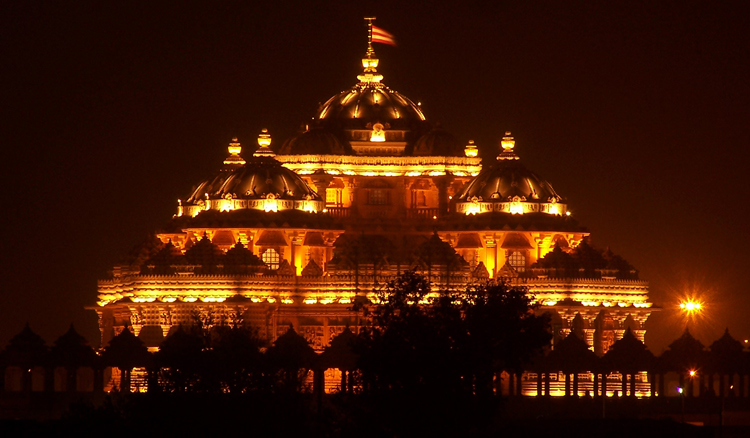
The Akshardham Temple is a massive temple complex in Delhi. It has got 20,000 statues, floral motifs, arches as well as exquisitely carved pillars.
The Akshardham Temple in Delhi was constructed under the patronage of the Bochasanvasi Aksharpurushottam Swaminarayan Sanstha (BAPS) and initiated on November 7, 2005. The temple complex represents an unique blend of the Hindu religion and Indian culture.
The Akshardham temple complex stands on the banks of the Yamuna and has more than a 100 acres of lawn decorated with water fountains and carved pavilions. An amount of 2 billions was spent on the building that took around 2 years to complete.
There is the IMAX theater, the Swaminarayan temple and a beautiful musical fountain in the large Akshardham temple in Delhi. The architectural design is a copy of the Akshardham temple in Gandhinagar, Gujarat, India. The chief monument of the Akshardham temple is about 141 feet high and possesses a grand statue of Lord Swaminarayan.
The followings are some of the important facts about the temple:
The Akshardham Temple in Delhi was constructed under the patronage of the Bochasanvasi Aksharpurushottam Swaminarayan Sanstha (BAPS) and initiated on November 7, 2005. The temple complex represents an unique blend of the Hindu religion and Indian culture.
The Akshardham temple complex stands on the banks of the Yamuna and has more than a 100 acres of lawn decorated with water fountains and carved pavilions. An amount of 2 billions was spent on the building that took around 2 years to complete.
There is the IMAX theater, the Swaminarayan temple and a beautiful musical fountain in the large Akshardham temple in Delhi. The architectural design is a copy of the Akshardham temple in Gandhinagar, Gujarat, India. The chief monument of the Akshardham temple is about 141 feet high and possesses a grand statue of Lord Swaminarayan.
The followings are some of the important facts about the temple:
- Year of Construction: 2005
- Constructed by: BAPS Swaminarayan Sanstha
- Managed by: Swaminarayan Sect
- Other Deities: Shri Radha Krishna Dev, Shri Sita Ram, Shri Laxmi Narayan and Shri Uma Maheshwar.
- Opening Schedule: 9 am - 9 pm (Tuesday-Sunday). Closed on Monday.
Popular features of the Akshardham Temple in Delhi
Hall of Values
The Hall of Values is the most important feature of the Akshardham temple. The Hall of Values is also called Sahajanand Pradarshan and is set in the 18th century backdrop. The hall features a number of robotics, fiber optics and dioramas that display incidents from the life of Swaminarayan. Theatre
The Akshardham temple also houses Delhi's only format screen theater. Also known as Neelkanth Kalyan Yatra, the theatre inside the Akshardham complex is home to the city's first large format screen that measures 85-foot (26 m) by 65-foot (20 m). The theatre features a film that is specially and only meant for the temple complex. It is called Neelkanth Yatra, the film is about the seven-year journey made by Swaminarayan throughout India during his teenage years. The movie also has an international version called Mystic India, which was released in 2005 at different theaters worldwide. Within the vicinity of the theater there is also a 27-foot tall bronze statue of Neelkanth Varni. Musical Fountain
The Yagnapurush Kund is one of the most striking features of the Akshardham temple complex. The Yagnapurush Kund which is the country's largest step well serves as a point of rest for many travelers during the day. There are a host of steps that lead to the traditional yagna kund. The many steps that offer relaxation to the many tourists in the day also offer a delightful musical fountain show at night. The musical fountain shown at night is a representation of the circle of life. There are about 2,870 steps and 108 tiny shrines on the Yagnapurush Kund. Boat Ride
If you want to explore the unexplored then a boat ride at the Akshardham is a must. There is an artificial river that passes through the Takshashila, the world's biggest. The peacock shaped boats known as Sanskruti Vihar, takes the visitors on a 10,000 year old journey of Indian history in just about 12 minutes. Garden of India
Another important feature inside the temple is the beautiful garden known as Garden of India. Popular as Bharat Upavan, the Garden of India spreads over acres and acres of well manicured lawns, large trees and a host of other plants and shrubs. The garden also has several bronze sculptures of famous Indian personalities that have contributed to India's history and culture. The various sculptures include the figures of freedom fighters, and other important people of India. Out of all the sculptures the most notable one is that of Mahatma Gandhi's. Narayan Sarovar
The Narayan Sarovar is a holy lake that surrounds the main building of the Akshardham temple. The Narayan Sarovar contains waters from about 151 lakes and Rivers that were blessed by the famous Swaminarayan. There are 108 gaumukhs surrounding the pious lake that symbolize Janmangal Namavali. AARSH Centre
The AARSH is a research center within the Akshardham complex. This research center is a place where eminent scholars and students carry out practical research and studies on social harmony and other related topics. Researchers in India can conduct research and affiliate their research papers with this institute. There are also numerous foreign students that travel to this research instate to carry out studies in topics like rural welfare, medicine, ecology social welfare etc.
Raj Ghat
The Hall of Values is the most important feature of the Akshardham temple. The Hall of Values is also called Sahajanand Pradarshan and is set in the 18th century backdrop. The hall features a number of robotics, fiber optics and dioramas that display incidents from the life of Swaminarayan. Theatre
The Akshardham temple also houses Delhi's only format screen theater. Also known as Neelkanth Kalyan Yatra, the theatre inside the Akshardham complex is home to the city's first large format screen that measures 85-foot (26 m) by 65-foot (20 m). The theatre features a film that is specially and only meant for the temple complex. It is called Neelkanth Yatra, the film is about the seven-year journey made by Swaminarayan throughout India during his teenage years. The movie also has an international version called Mystic India, which was released in 2005 at different theaters worldwide. Within the vicinity of the theater there is also a 27-foot tall bronze statue of Neelkanth Varni. Musical Fountain
The Yagnapurush Kund is one of the most striking features of the Akshardham temple complex. The Yagnapurush Kund which is the country's largest step well serves as a point of rest for many travelers during the day. There are a host of steps that lead to the traditional yagna kund. The many steps that offer relaxation to the many tourists in the day also offer a delightful musical fountain show at night. The musical fountain shown at night is a representation of the circle of life. There are about 2,870 steps and 108 tiny shrines on the Yagnapurush Kund. Boat Ride
If you want to explore the unexplored then a boat ride at the Akshardham is a must. There is an artificial river that passes through the Takshashila, the world's biggest. The peacock shaped boats known as Sanskruti Vihar, takes the visitors on a 10,000 year old journey of Indian history in just about 12 minutes. Garden of India
Another important feature inside the temple is the beautiful garden known as Garden of India. Popular as Bharat Upavan, the Garden of India spreads over acres and acres of well manicured lawns, large trees and a host of other plants and shrubs. The garden also has several bronze sculptures of famous Indian personalities that have contributed to India's history and culture. The various sculptures include the figures of freedom fighters, and other important people of India. Out of all the sculptures the most notable one is that of Mahatma Gandhi's. Narayan Sarovar
The Narayan Sarovar is a holy lake that surrounds the main building of the Akshardham temple. The Narayan Sarovar contains waters from about 151 lakes and Rivers that were blessed by the famous Swaminarayan. There are 108 gaumukhs surrounding the pious lake that symbolize Janmangal Namavali. AARSH Centre
The AARSH is a research center within the Akshardham complex. This research center is a place where eminent scholars and students carry out practical research and studies on social harmony and other related topics. Researchers in India can conduct research and affiliate their research papers with this institute. There are also numerous foreign students that travel to this research instate to carry out studies in topics like rural welfare, medicine, ecology social welfare etc.
Raj Ghat
Category : History & Culture
Raj Ghat in Delhi is the sacred sight where the Father of the Nation, Mahatma Gandhi was cremated. Following the assassination of Mahatma Gandhi on 30th of January, 1948, his body was cremated in Raj Ghat the next day. Raj Ghat is located on the western bank of River Yamuna, and therefore was considered to be the best place for the creation of the memorial of Mahatma Gandhi.
Raj Ghat can be described as a simple square shaped platform, with a black memorial stone, which has the words "Hey Ram" engraved in it. These were the last words that came out of the mouth of Gandhiji before he took his last breath. The Samadhi consist of a black marble platform, of the same size that of the brick platform in which Gandhiji was burnt. The Samadhi of Mahatma Gandhi has been surrounded by beautiful plants and trees that provide a peaceful ambience. It is also protected by high walls. Two museums, constructed in the nearby areas are dedicated to Mahatma Gandhi. The Samadhi of Jawaharlal Nehru was also constructed to the north of Raj Ghat in Shanti Van.
Purana Quila (Old Fort)
Category : History & Culture
Purana Quila is a rectangular shaped fort that is spread nearly two kilometers wide. There is a small archaeological museum just inside the main gate and there is a good view of New Delhi from atop the gate. A Sound and Light Show is held here every evening.
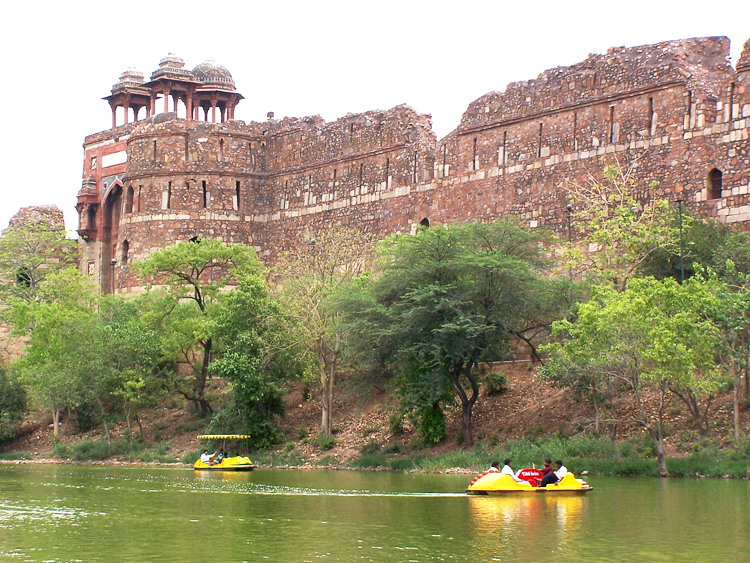
Old Fort of Delhi is a fascinating building that survived the ravages of
time. The Old Fort or the Purana Qila is also known as the
'Qila-i-kuhna masjid' built by Sher Shah Suri in 1541. Old Fort at Delhi
is a perfect example of Lodi style of architecture in Delhi. The
architecture of the Old Fort of Delhi
is a fine blend of the Hindu elements together with the Muslim style of
arches and domes. In short the style of architecture of the Old Fort
can be considered as a secular architectural style.
The mosque in the Delhi Old Fort has a tranquil environment. The prayer hall of the mosque is about 51.20 meters by 14.90 meters. There are five doorways and horseshoe-shaped arches in the mosques of the Old Fort of Delhi. The whole structure of the Delhi Old Fort was made up of red sandstone with contrast of marbles.
The construction of the Old Fort in Delhi is said to have been started by Humayun, the Afghan ruler. But Sher Shah after defeating Humayun is said to have completed the structure. Thus the fort displays a sheer blend of Mughal, Hindu and Afghan architecture, creating an impressive sight. A shimmering lake near the Old Fort of Delhi allows boating facilities to the tourists.
The Delhi Old Fort is very near to the India Gate and the Humayun's tomb in New Delhi. No entry fee is charged to enter the Delhi Old Fort. The Delhi Old Fort is open from sunrise to sunset.
Lodhi Garden
The mosque in the Delhi Old Fort has a tranquil environment. The prayer hall of the mosque is about 51.20 meters by 14.90 meters. There are five doorways and horseshoe-shaped arches in the mosques of the Old Fort of Delhi. The whole structure of the Delhi Old Fort was made up of red sandstone with contrast of marbles.
The construction of the Old Fort in Delhi is said to have been started by Humayun, the Afghan ruler. But Sher Shah after defeating Humayun is said to have completed the structure. Thus the fort displays a sheer blend of Mughal, Hindu and Afghan architecture, creating an impressive sight. A shimmering lake near the Old Fort of Delhi allows boating facilities to the tourists.
The Delhi Old Fort is very near to the India Gate and the Humayun's tomb in New Delhi. No entry fee is charged to enter the Delhi Old Fort. The Delhi Old Fort is open from sunrise to sunset.
Lodhi Garden
Category : Garden
Once called the Lady Willingdon Park, the Lodhi Garden contains tombs of Mubarak Shah, Ibrahim Lodi and Sikander Lodi among its well kept lawns and trees. The garden is a favored spot for early morning fitness freaks and those seeking solitude. . Lodhi garden is located beside India International Center which is just 3 kilometers away from Humayun's Tomb. It is one of the historical gardens in Delhi. Lodhi garden houses the tombs of Sayyid and Lodhi rulers.
Lodhi garden was set up in between the 15th and 16th centuries by the Sayyid and Lodhi rulers. The garden is very well kept and still have some historical monuments which are an added attraction for the tourists.
Lodhi garden in Delhi has been re-deigned by JA Stein and Garrett Eckbo in the year 1968 and that's how it got the present shape. At Lodhi garden you must visit the tombs of Muhammad Shah, the 3rd leader of Sayyid dynasty and Sikandar Lodhi.
There is a Bara Gumbad and Sheesh Gumbad in the center of Lodhi Garden in Delhi which speak of the architectural glory of that era. The former comprises of a large rubber construct dome, a three domed mosque and a residence surrounding a central courtyard which contains the remains of a water tank and opposite to this Bara Gumbad lies the Sheesh Gumbad which consists of the remains of an unknown family.
Humayun's Tomb
Category : History & Culture
Located near Mathura road, this magnificent garden tomb is a fine example of Mughal structural design in India. It was built in 1565 by his widow Hamida Banu Begam, after the death of Humayun. Inside the enclosure is the garden squares with pathways and water channels.
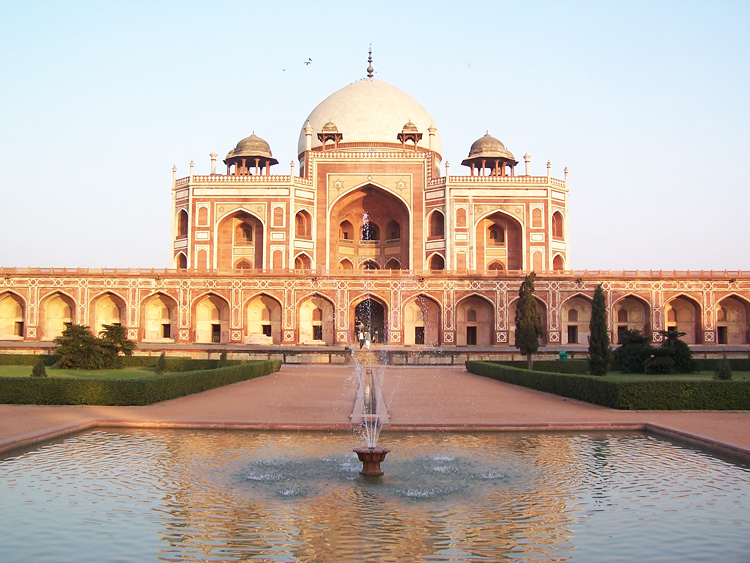
The famous Humayun's Tomb of Delhi
is the first garden tomb in India. A complex commissioned in 1562 CE by
Hamida Banu Begum Humayun's wife and designed by Mirak Mirza a Persian
architect this monument is one of the first specimens of Mughal
architecture in the Indian subcontinent. Located on the banks of the
River Yamuna this structure was declared a UNESCO Heritage site in 1993.
The famous Humayun's Tomb of Delhi is considered to be the precursor of the 'Taj Mahal' as far as the architectural structure is concerned. It represents the Mughal style of architecture at its best. One of the major attractions in the city this mausoleum serves as the burial ground of several Mughals apart from the emperor himself.
The famous Humayun's Tomb of Delhi is considered to be the precursor of the 'Taj Mahal' as far as the architectural structure is concerned. It represents the Mughal style of architecture at its best. One of the major attractions in the city this mausoleum serves as the burial ground of several Mughals apart from the emperor himself.
The Humayun's Tomb is a magnificent piece of architecture that took almost 9 years to complete with an expenditure of nearly one and a half million rupees. The mausoleum is a 140 feet high structure with a central dome. The double-layered dome has a white marble exterior but the rest of the tomb is made of red sandstone, with white marble ornamentation. Built over acres of lush green land and surrounded by fountains this complex is home to a well manicured garden, a beautiful mosque and several other tombs.
This red and white building is an example of Persian influence on Indian
architecture. Humayun was the first to be buried in the Tomb when he
died in 1556 but the tomb has now within it over 100 graves, earning the
name, 'Dormitory of The Mughals'. Steep steps lead up the Sanctum of
the tomb. The Central chamber looks quite plain now but it was
remarkably decorated in the past. William Finch an English Merchant who
visited it in 1611 unforgettably describes the presence of expensive
carpets, and other rich items including Humayun's sword, turban and
shoes.
The 13 acres land surrounding the tomb became difficult to maintain when the Mughals shifted the capital to Agra. Things good worst when the British captured Bahadur Shah II in 1857. They replaced the original garden with British like garden. Now, the Archaeological Survey of India has tried to restore it to the glorious past. The gardens surroundings are lush and lively at this time of the year. The vast open spaces and cool shades surrounding the tomb are a treat for city dwellers.
Though the monument we see now is only a shadow of the glorious past, the red Sandstone tomb sparks when the golden evening sun shines over it. The magic of that moment makes everything new. You can hear the sound and happy screams of children as they make the best of their trip. It still has so much to offer.
This monument in Delhi attracts people from Indian and all corners of the globe.
The 13 acres land surrounding the tomb became difficult to maintain when the Mughals shifted the capital to Agra. Things good worst when the British captured Bahadur Shah II in 1857. They replaced the original garden with British like garden. Now, the Archaeological Survey of India has tried to restore it to the glorious past. The gardens surroundings are lush and lively at this time of the year. The vast open spaces and cool shades surrounding the tomb are a treat for city dwellers.
Though the monument we see now is only a shadow of the glorious past, the red Sandstone tomb sparks when the golden evening sun shines over it. The magic of that moment makes everything new. You can hear the sound and happy screams of children as they make the best of their trip. It still has so much to offer.
This monument in Delhi attracts people from Indian and all corners of the globe.
Safdarjung Tomb
Category : History & Culture
It is the last enclosed garden tomb in Delhi with tradition to the Humayun's Tomb. Built in 1754, the tomb of Safdarjung is less grand in scale and size. It has a number of smaller pavilions like Jangli Mahal, Moti Mahal, Badshah Pasand and Madarsa.
Connaught Place
Category : History & Culture
One of the biggest commercial areas in Delhi, Connaught Place has lots of variety of shops, businesses, restaurants and emporiums for every taste and budget.
Dilli Haat
Category : Fun & Entertainment
It provides an ambience of a traditional market, but one fitting the more modern needs. One can see a mixture of crafts, food and cultural activity. It's a place where Indian culture and ethnic cuisine come together, a unique bazaar that exhibits the affluence of Indian culture.
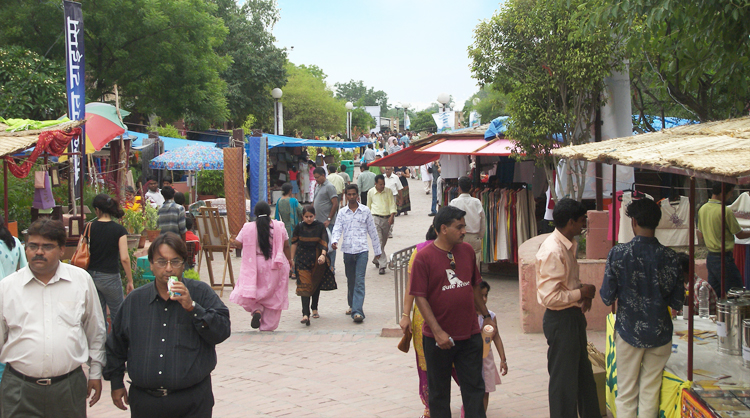 | ||||||
Delhi Haat, the blend of eating joints and crafts bazaar, is located at Shri Aurobindo Marg opposite INA market in New Delhi. Being situated at the heart of South Delhi, Delhi Haat attracts lots of visitors everyday, most of which includes national and international tourists.
Delhi Haat which is also
called Dilli Haat is the brain child of the Tourist Department of
Delhi. Delhi Haat was established to promote the arts and crafts
industry of India. Further, you can enjoy shopping the ethnic items of
India and pamper your taste buds with the lip smacking Indian dishes at a
very reasonable rate under one roof.
Delhi Haat is a permanent haat where the craftsmen are mobile and offer you a pleasing combination of arts and crafts, food and cultural activities. Delhi Haat covers a vast area of 6 acres. Apart from the market, Delhi Haat comprises of a separate corner for children to play.
Delhi Haat houses two things together - a food joint and a crafts market - both inspired from the village style. The food brasseries offer you the rich Indian food from all regions, all neatly and hygienically cooked. Laxminarayan Temple (Birla Mandir)
Delhi Haat is a permanent haat where the craftsmen are mobile and offer you a pleasing combination of arts and crafts, food and cultural activities. Delhi Haat covers a vast area of 6 acres. Apart from the market, Delhi Haat comprises of a separate corner for children to play.
Delhi Haat houses two things together - a food joint and a crafts market - both inspired from the village style. The food brasseries offer you the rich Indian food from all regions, all neatly and hygienically cooked. Laxminarayan Temple (Birla Mandir)
Category : Religious
Built in 1938 by the Industrialist G.D. Birla, it is one of the major temples in Delhi and is located near Connought Place. The temple is dedicated to Goddess Laxmi and her consort Narayana. The temple was inaugurated by Mahatma Gandhi on the stipulation that people of all castes shall be allowed to enter the temple.
ISKCON Temple
Category : Religious
Popularly called as the Hare Krishna temple, it's a famous temple with idols of Sri Sri Radha Krishna. Located in South Delhi, the temple is mainly built with red stone is acknowledged for its distinctive architecture that blends the traditional Vedic style with modern style.
Tughlaqabad Fort
Category : History & Culture
In 1321, Ghazi Malik of Tughlaq built the strongest fort in Delhi at Tughlaqabad within four years of his rule. It is the most massive and spectacular fort even in its ruined state. Within its walls, bastion and huge towers are impressive palaces, marvelous mosques, and grand audience halls.
Chandni Chowk
Category : History & Culture
It is one of the oldest and busiest markets in Delhi and Asia's largest wholesale market. Created by Shah Jahan, the market stretches in the old city from the Red Fort to Jama Masjid.
National Agricultural Science Museum
Category : History & Culture
Situated in the National Agricultural Science Centre campus of ICAR, it is the first of its kind in the India. A specially designed double storey building of 23,000 sq ft floor area depicts the development of agriculture in India since ancient time and the current state-of-the-art technology in agriculture in our country with future prospects.
National Rail Museum
Category : History & Culture
Located on the Maulana Azad Road, it is one of the largest museums in India and holds a variety of articles ranging from pre-historic era to contemporary works of art. Managed by the Ministry of Culture, it is a part of the Government of India.
Tourist Destinations Near Delhi
This city located in Uttarakhand is one of the popular pilgrimages in the country of India. Because of its prime location on the banks of the river Ganges, this pilgrimage city of India is among the 7 holiest Hindu places.
Apart from being a famous tourist destination to the Indians as well as
global tourists throughout the year, Haridwar is even famous among
people as being the location of the Kumbha Mela, which is held here once
in every twelve years.
Mathura
Mathura
Mathura, the birth place of Lord Krishna, is located in Uttar Pradesh on the west of the river Yamuna. Besides being a Hindu pilgrimage, this north-Indian city is the centre for administration of the Mathura District. Mathura encompasses a total area of 3,800 sq. km. Mathura is popularly known as the "Brajbhoomi", the sacred land of Lord Krishna. The city lies 145 km to the south east of Delhi and 58 km to the north west of Agra, Uttar pradesh. Mathura attracts many tourists and pilgrims through out the year. Every nook and corner of the city reverberates with the music of flute that was played by Lord Krishna in his youth. Mathura has many legendary and historical stories attached to it which makes the place all the more special.
Agra
Located in Uttar pradesh on the banks of the River Yamuna, the city of Agra is synonymous with the Taj Mahal- one of the Seven Wonders of the World, renowned for its beauty and historical significance. Agra is located 363 kms from the state capital of Lucknow and is on the itinerary of all travelers- domestic and international.
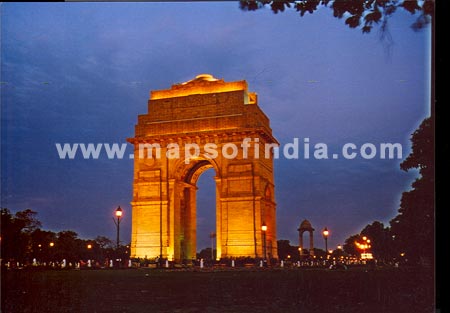
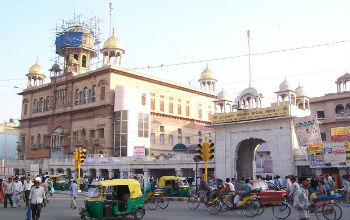
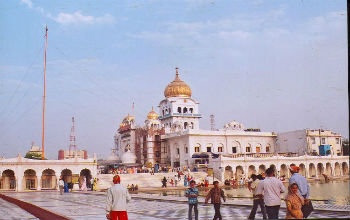
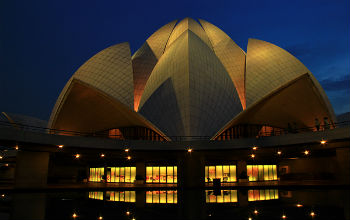
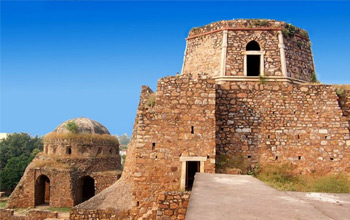
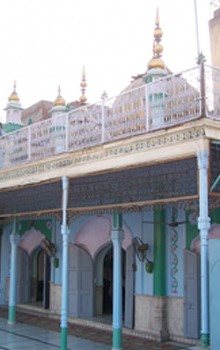
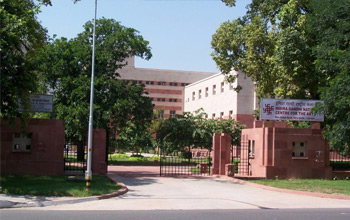
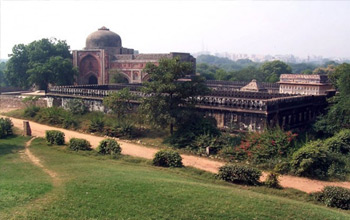
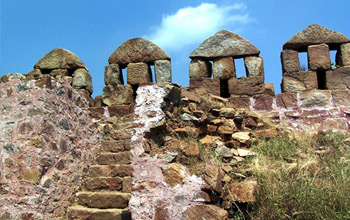
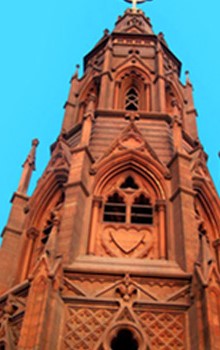
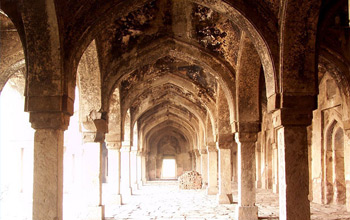
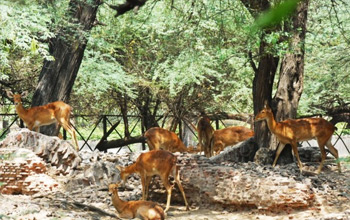
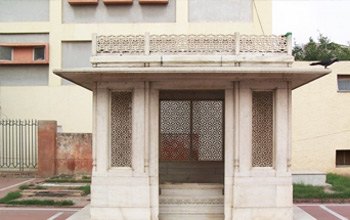
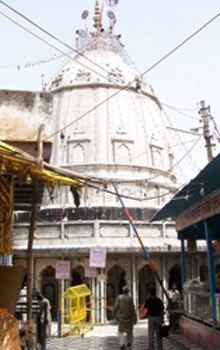
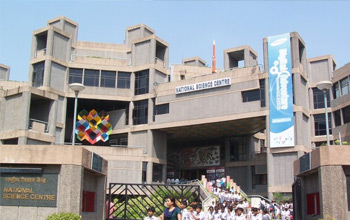
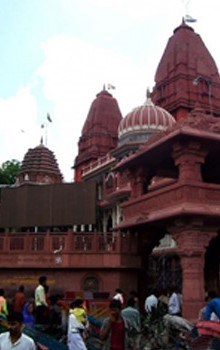
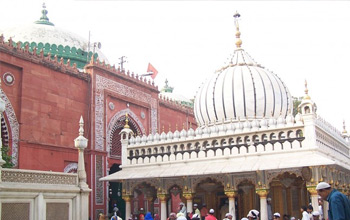
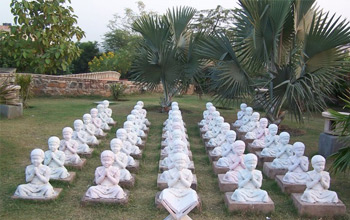
No comments:
Post a Comment